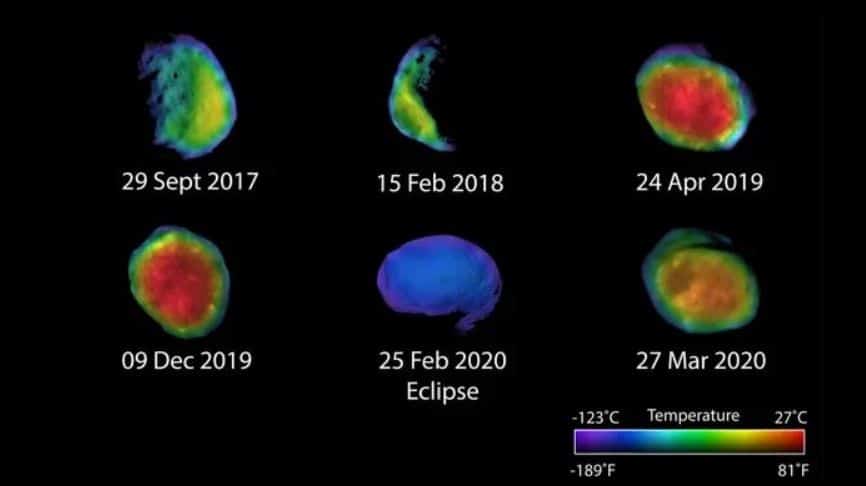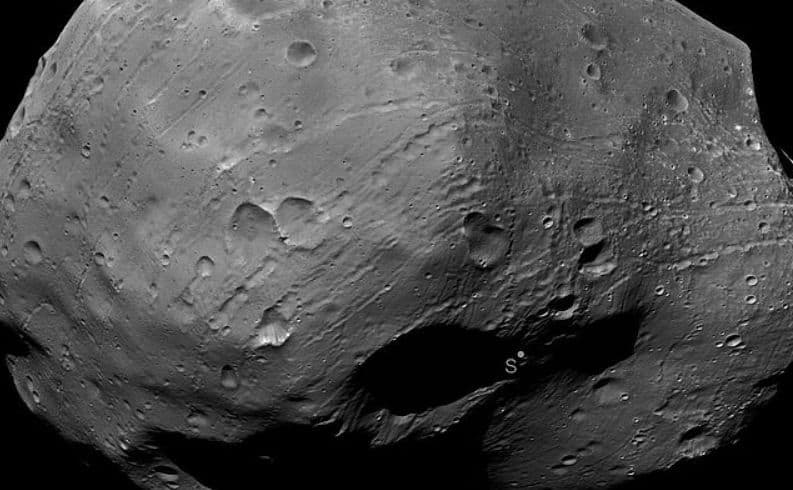NASA’s Mars Odyssey probe has been orbiting the Red Planet for nearly 19 years, making it the longest-serving spacecraft in the world orbiting another planet.
Over the years, it has witnessed many strange things that are almost impossible for observers from Earth to notice. For example, the stunning colorful image of the Martian moon Phobos is a great example of alien landmarks that Mars Odyssey can see and explore in all its glory.
Six unusual spheres, captured in the photo, resemble fruit candy. However, in reality, all this is Phobos colour variations mean different temperatures of the moon, which Mars Odyssey was able to calculate thanks to a special thermal imager.

The color blue, that is, the coldest hours, falls on the time of the lunar eclipse. At this time, Mars completely obscures its satellite from the light of the Sun. And bright red shades, on the contrary, show those periods when the surface of Phobos heats up to its maximum temperature. By the way, for the Martian moon it is small – only 27 degrees Celsius.
Constant analysis of Phobos and its surface characteristics allows us to find out what the tiny moon really is (with a radius of only about 11 kilometres). Was it an asteroid pulled into the gravitational field of Mars, or perhaps something more? In the scientific community, the theory that Phobos is a fragment that broke away as a result of a terrible cataclysm that happened in the distant past of the Red Planet is extremely popular today.
